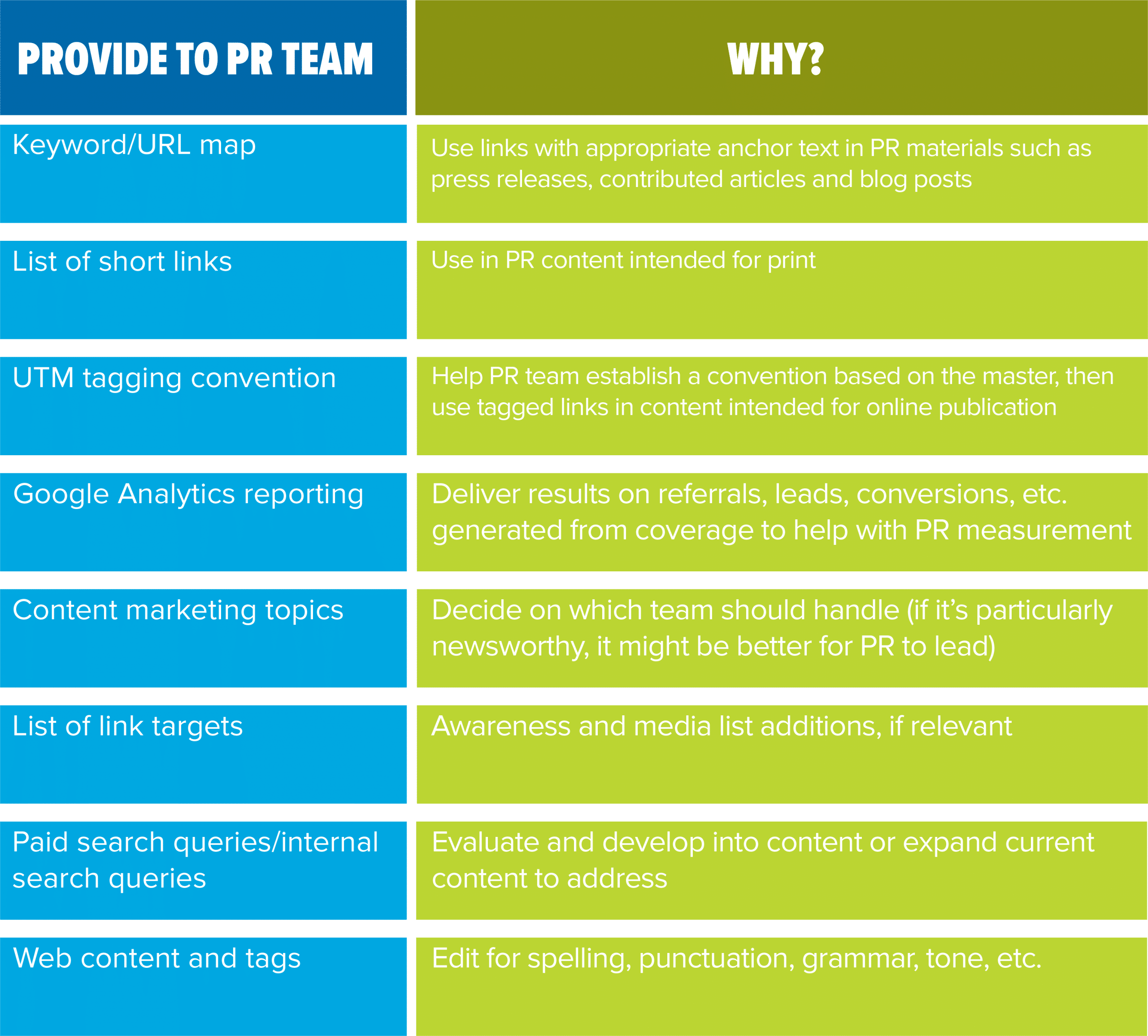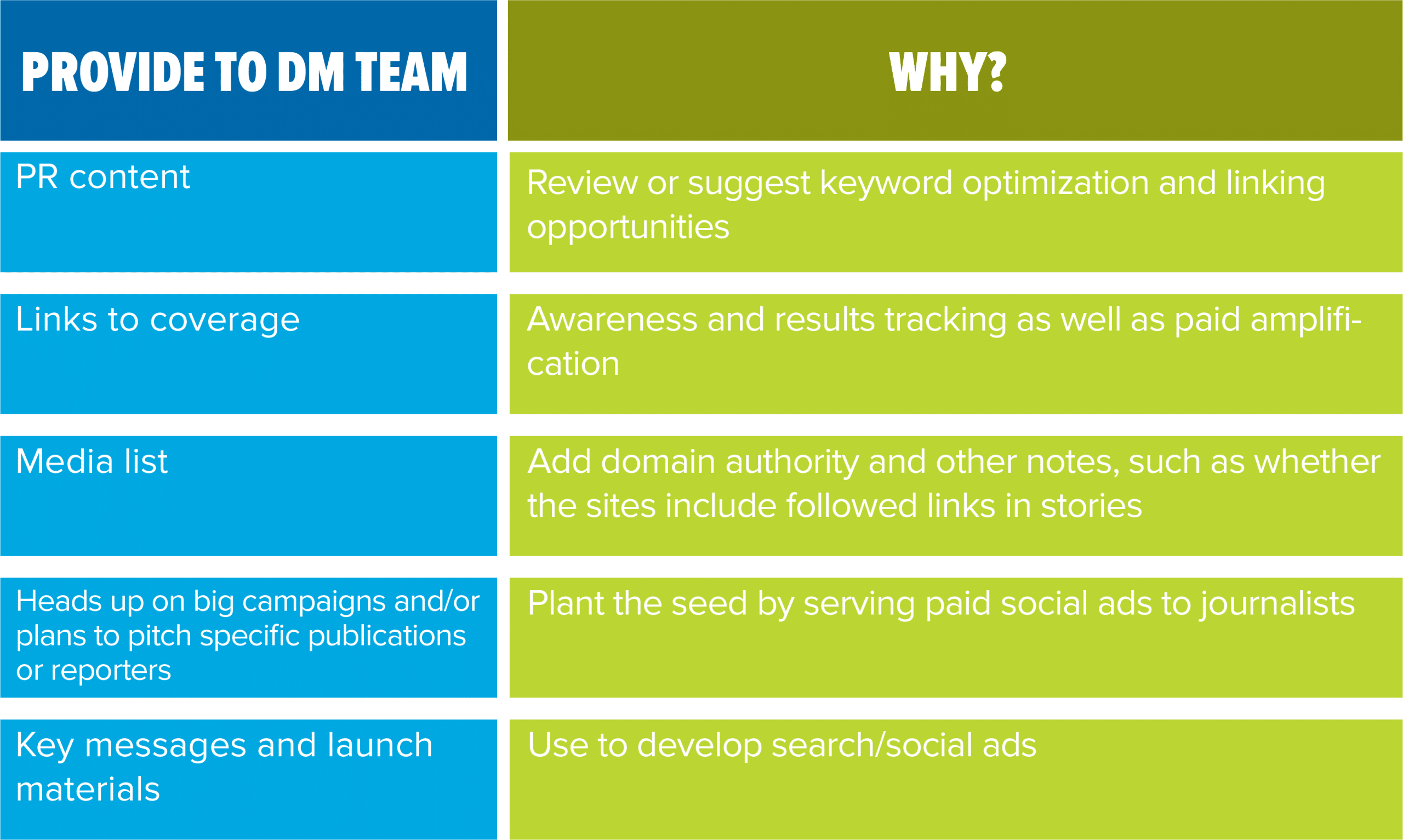Hey, marketers! Wondering why your requests to the public relations team are often met with reactions like this?
Despite signs pointing to the convergence of PR and marketing, many a PR executive remains skeptical of digital marketers. On the flip side, a lot of marketers are baffled by the public relations profession. We all know we should be working together, but attempts at collaboration often fail or are limited to one-off tasks or projects.
Why the disconnect? Simple: Neither side fully understands what the other does ” and why. Articles about digital marketing (SEO, in particular) geared toward PR execs tend to oversimplify and provide off-base advice. Articles about PR geared toward digital marketers tend to generalize PR as media relations.
In our experience, it’s typically the marketing side making an ask of the PR team. And if the anecdotes we’ve heard are representative of most interactions, it often doesn’t go well. So, fellow marketers, how do you avoid coming off as dogs annoying cats with friendship? Come along as we clear up some misconceptions about PR, offer a few relationship-building tips and chart a course toward integration.
What is public relations?
If you think public relations executives just pitch the media, this section is for you. Understand that PR, like digital marketing, comprises different practices and specialties? Skip down.
The essence of most definitions of PR is “managing an organization’s communication with its stakeholders.” That last word is key. Stakeholders could be current or prospective employees, customers, investors, shareholders, community members, regulators, legislators ” you get the point. Getting an organization covered in the news (as a result of media relations) is just one method of reaching stakeholders, not the sole method.
Like digital marketing, PR is plan-driven, with goals, strategies, tactics and measurement. Plans might exist for positioning a brand, launching a product, handling a crisis, opening a facility, announcing an acquisition and so on. Unlike digital marketing, or at least the technical aspects of digital, it’s more art than science.
Still with us? Cool, we’ll make the rest of this quick.
PR is not (always):
- Content marketing. A common misconception is that the PR team should promote the content marketing team’s work. This makes sense in some cases, but not all, and it’s where early collaboration is beneficial. Talk through the pros and cons of a PR approach vs. a content marketing approach to a specific idea in advance.
- Parties and events. Like media relations, events are just one method of reaching stakeholders.
- Stunts. Same as above. Sometimes they work, sometimes they backfire.
- Spin. Can PR execs put a positive spin on layoff announcements? Yes. Do they like to? Should they? No.
- A steady stream of press releases. Remember the old SEO advice of one press release per month to “keep the link juice flowing”? That was cute. PR pros write releases when there’s news to share.
- Lead gen. Sure, PR can generate leads, but it’s rarely the ultimate goal.
- Link building. PR execs don’t pitch links, they pitch stories.
- Damage control. Yes, they’re the ones that get the call when someone’s dragged off a plane, but that doesn’t give anyone license to behave badly. So, please stop thinking “PR will clean it up.”
Establishing a relationship with PR
Any cat owner knows they have between two and nine seconds before a belly rub turns into a mauling. The trick is knowing when the time is right to start and when enough is enough.

Forgive the horrible analogy, but many digital marketers who’ve attempted the PR belly rub have probably wondered why there’s such resistance to requests. Barge in a la BBC dad’s daughter requesting the team’s carefully curated media list that’s taken years of relationship building, and the pushback shouldn’t be a shock. It may just be that your timing’s off, particularly if PR is embroiled in a looming crisis or other time-sensitive issue.
So, marketers, there’s a couple things you must do to avoid a hiss and claws-out swipe at your face. First, and foremost, speak their language. A couple pointers:
- Don’t call a public relations executive a PR. It works for SEO (search engine optimizer), but not so much for PR (public relater?). Executive, professional and practitioner are safe.
- PR = public relations. “Let’s do a PR on our [whatever]” doesn’t make sense. Call it a release, please.
- Don’t miss the “l” in public.
- They don’t build links, they pitch.
Aren’t these just nitpicky semantics? Perhaps. But you want to establish a relationship, right?
Second, understand their motivations and respect what they do. When they pitch the media, the goal is to secure coverage that raises awareness of an organization (and/or its product/service/position), not to secure links. Sure, they can ask for a link if one isn’t included in the story and the publication has done so in the past. But they’re not going to convince a reporter to deviate from standard practice (linking to other stories about the company or a company profile on their own site, for example). It’s not journalists’ responsibility to help with marketing. In some cases, asking for a link can land the PR pro on a blacklist, so trust their judgement on when it’s appropriate to make the request.
Some other notes:
- Trust between a PR exec and journalist is paramount, which is why they tend to keep their relationships guarded.
- Deadlines are sacred.
- There’s no place for bias in PR materials. Releases, bylined articles and the like must be factual.
- Quality is usually more important than quantity.
- Pitching takes the opposite approach to (bad) link-building outreach: heavily researched, highly personalized, not scalable.
Finally, remember that collaboration is a two-way street. Links in stories PR reps place help your cause. What can you do to help them? Pull a monthly report of website referrals and conversions generated by those links? Set up a retargeting campaign for visitors to the company newsroom? The PR team will be more interested in working with you if the relationship is mutually beneficial.
Breaking down silos starts with education
Ready to start integrating? Wonderful. Don’t wait until the next product launch or major announcement. Partner early on, and start with education. It probably goes without saying, but avoid condescension at all costs; both sides have something to learn from the other. These areas will likely be useful to the PR team:
- SEO: How search engines work (crawling, indexing, ranking), ranking factors, authority measures, etc.
- HTML basics
- URL tagging basics and tutorial
- Google Analytics basics and tutorial
- Capabilities of search and social ad platforms, particularly psychographic targeting and retargeting
- Resources for further education: Encourage the team to keep up with sources such as Search Engine Land and Moz
Expect a little education from your PR team in return on things such as:
- AP Style
- Identification of newsworthiness
- Media relations basics: Types of publications and editorial roles, media lists, editorial calendars, nuances of pitching, working with reporters, etc.
- Media training
Keep in mind, the point of this education isn’t for the PR team to take over on-page optimization duties, or for marketers to take on a media relations role; it’s to apply learnings to tasks each team already handles. For example, PR executives can incorporate tagged links in press releases, while digital marketers could employ pitching tactics in link-building outreach.
How digital marketing & PR teams can collaborate
Education should be ongoing given how fast digital evolves, but once the basics are out of the way, it’s time to get to work. Initiate an exchange of documentation and establish open lines of communication. Here’s a couple ideas to get started:
For any major initiative, ensure teams are aligned early and collaborate often. For example, the SEO team should be involved at the naming stage for a new product launch (ideally, PR is as well to avoid naming gaffes). Once the product name is finalized, ensure the PR team is notified so that any internal and external communication uses the correct verbiage.
For collaboration to work long term:
- Commit to partnering rather than making one-off requests.
- Hold a regular meeting for teams to check in on what the other is working on, and whether any support can be provided. If that’s not possible, designate a liaison from each team to work together.
- Value transparency and education. Asking for a media list? Tell PR what you’ll do with it, why and how. PR team not using (all of) the SEO team’s recommendations on press release optimization? They should say why.
- Keep departmental goals in sight, but don’t forget you’re working toward a common cause.
PR and digital marketing teams are more powerful together; there’s really no reason for total separation. Cats and dogs can get along. All it takes is a little time, trust and respect.

Have you established a productive relationship with your PR team? How’d you do it? Leave a tip below. Still charting a course? Share this post with your teams to get the ball rolling.
If you need PR management we can help.
Image credit: Jagodka/Shutterstock.com












